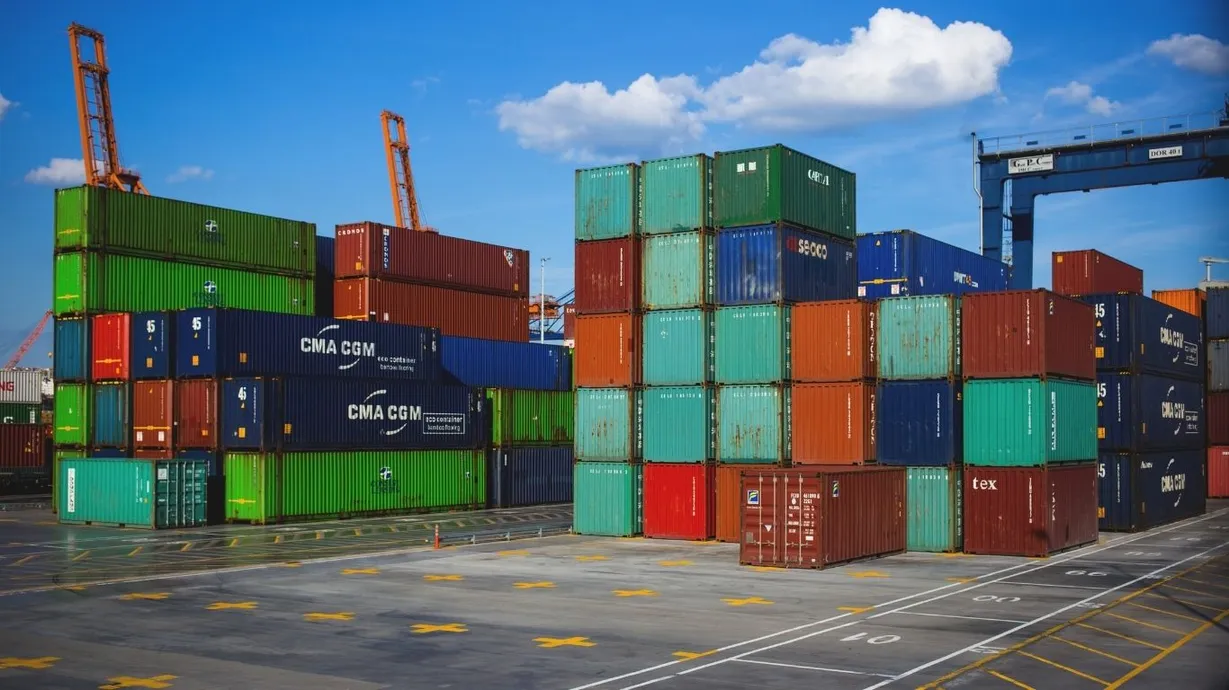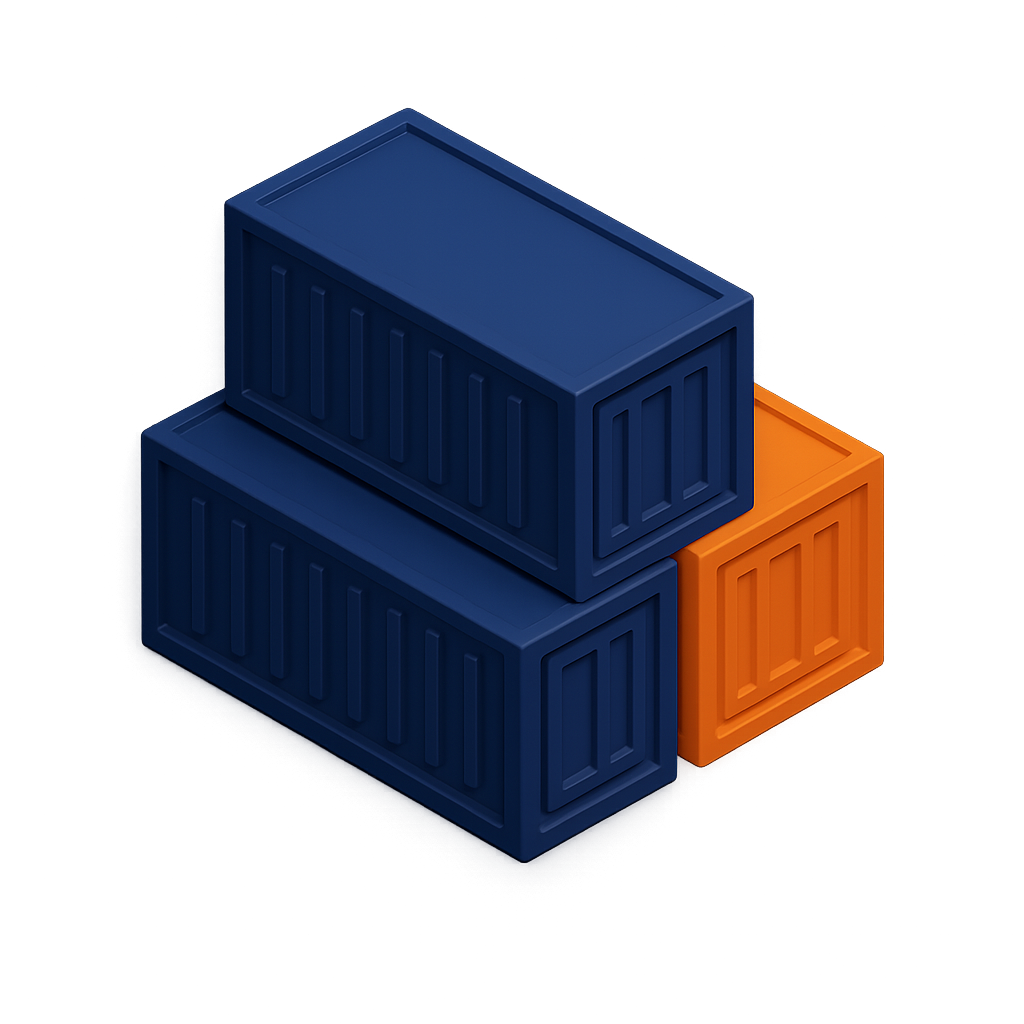Everything You Need to Know About High Cube vs Standard Containers

Introduction
When shopping for a shipping container, one of the first decisions you’ll face is choosing between a high cube and a standard container. Both have their advantages, but the best choice depends on your specific needs—whether it’s for storage, shipping, or building your dream container home.
This guide breaks down everything you need to know to make the right call.
What Are Shipping Containers?
Shipping containers are large, standardized steel boxes used to transport goods across the globe. Over time, they’ve evolved into multipurpose structures—used for homes, pop-up shops, and on-site storage.
What Is a Standard Shipping Container?
Key Dimensions and Specs
- External Height: 8’6″ (102 inches)
- Standard Lengths: 20ft or 40ft
- Width: 8 ft
- Volume (40ft): Approx. 2,390 cubic feet
- Weight Capacity: ~67,200 lbs gross weight
Typical Use Cases
- Global shipping of general cargo
- On-site storage for tools, materials, and equipment
- Temporary shelters or office spaces
- DIY conversions with basic height requirements
What Is a High Cube Shipping Container?
Key Dimensions and Specs
- External Height: 9’6″ (114 inches) — 1 foot taller than standard
- Standard Lengths: 40ft and 20ft
- Width: 8 ft
- Volume (40ft): Approx. 2,694 cubic feet
- Weight Capacity: Slightly less payload due to added height
Typical Use Cases
- Converting into homes, offices, or studios
- Tall or bulky cargo (machinery, stacked goods)
- Enhanced storage with shelving
- Interior insulation projects needing vertical space
High Cube vs Standard: A Side-by-Side Comparison
| Feature | Standard Container | High Cube Container |
|---|---|---|
| Height | 8’6″ | 9’6″ |
| Volume (40ft) | ~2,390 cu ft | ~2,694 cu ft |
| Ideal For | Shipping, basic storage | Conversions, tall items |
| Weight (empty) | Slightly lighter | Slightly heavier |
| Cost | Less expensive | ~10–15% more |
Height and Internal Space
That extra foot in height makes a noticeable difference—especially for building projects. You’ll get more air, vertical storage, or headroom for mezzanine levels.
Weight and Volume
High cubes offer more volume, but because they weigh a bit more, their payload capacity can be slightly lower for shipping purposes.
Cost Differences
High cube containers generally cost 10–15% more than their standard counterparts, but the added space often justifies the cost—especially for modifications.
Customization and Modifications
Planning a container home? The high cube gives you room for:
- Better insulation
- Overhead lighting
- Ceiling fans or loft beds
- HVAC systems
Which Container Is Best for Your Needs?
For Storage Purposes
- Use standard containers for general storage (tools, boxes, materials)
- Use high cube containers if storing tall equipment or stacking inventory
For Container Homes or Offices
High cubes win here—hands down. That extra vertical space makes interiors feel more open and easier to furnish.
For Shipping or Logistics
- Use standard containers unless your cargo requires added height
- Consider high cube for shipping light, bulky goods that don’t stack well
Pros and Cons Summary
Pros of High Cube Containers
- Extra headroom = comfort and storage flexibility
- Ideal for modifications and tall shelving
- Better airflow and lighting options
Pros of Standard Containers
- Lower purchase price
- Easier to transport
- Widely available for all purposes
Where to Buy or Rent
At First Choice Shipping Containers, we carry both standard and high cube containers in multiple sizes and conditions. Whether you’re storing equipment, building a home office, or starting a new business, our experts will help match the right container to your needs—with nationwide delivery available.
Conclusion
Choosing between a high cube and a standard container isn’t just about size—it’s about purpose, budget, and vision. If you’re shipping or storing goods, a standard unit may be perfect. But if you’re customizing your container into a living space or need added height, the high cube is worth every extra inch.
Still unsure? Contact us at First Choice Shipping Containers and get a personalized recommendation today.
FAQs
1. Are high cube containers harder to find?
They’re slightly less common than standard containers but readily available through major suppliers like First Choice Shipping Containers.
2. Can high cubes be stacked?
Yes! Both types can be stacked, but ensure proper loading and structural support, especially in multi-level builds.
3. Do high cubes require special permits for delivery?
Not usually, but always check local transport rules—especially if you’re in a city or narrow-access area.
4. Is it easier to insulate a high cube?
Yes. The extra headroom allows for more insulation and HVAC flexibility without making the space feel cramped.
5. Can I mix both types in a build?
Absolutely. Many people use standard containers for storage and high cubes for livable spaces in hybrid container projects.

